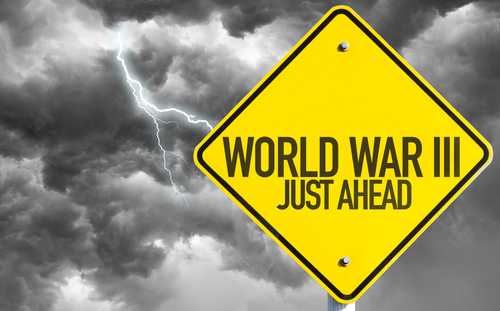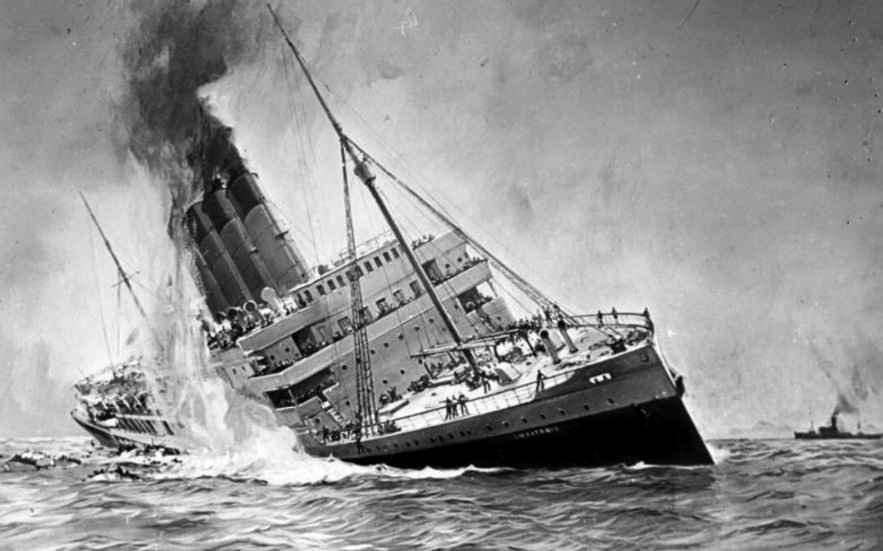The interesting issue concerning radiation detection in Ukraine is that after stating that radiation was detected, the West claims there is none. Russia claims to have bombed an ammunition depot containing depleted Uranium shells, which will contaminate the landscape. Britain supplied these shells to Ukraine – that much we know. Russia claims that a radioactive cloud is now drifting toward Western Europe, and the EU denies it. As I have said, the first casualty of war is always the truth. The EU will certainly not admit such a thing, for that would confirm that they gave Ukraine illegal weapons. On the other hand, denying that means people, crops, and animals can get sick, and then what, we blamed another virus? Truth is just so hard to find in times of war.
The United States in April wired Ukraine so they could identify any nuclear attack. We do know that the British defense ministry confirmed it would provide Ukraine with armor-piercing rounds containing depleted uranium. The U.S. developed these during the Cold War to destroy Soviet tanks.
Putin did accuse London of proliferating “weapons with a nuclear component,” while the British called this “disinformation.” Depleted uranium is based on the isotope U-235 which is extracted from natural uranium ore, and this is even used as fuel for reactors and in nuclear weapons. This process is called enrichment. But the content of the “useful” isotope in the ore is about 10%. The remaining 90% of the isotope contains negligible amounts of U-235, which consist mainly of the slightly radioactive U-238. This is the depleted uranium which can be described as waste from the enrichment process.
This depleted uranium is very dense. This means that it is much heavier than, for example, steel shells of the same size. Consequently, the force of energy upon impact is very strong, enabling it to penetrate armor. The depleted uranium does not explode, but small fragments that can penetrate armor can easily be ignited. Therefore, a projectile made of this material is an armor-piercing incendiary material. The US has also been using it in shells of high-speed smaller caliber guns of 25-30mm used on Infantry-Fighting Vehicles (IFV) and attack aircraft.
The US first used them during Operation Desert Storm in 1991. Literally, hundreds of thousands of such shells were used in Iraq. The Pentagon also acknowledged that they used these shells in the former Yugoslavia, Iraq, and Syria. These depleted uranium shells are not subject to nuclear non-proliferation rules. Therefore, in terms of international law, they have yet to be classified separately. Nor are there any international agreements that would regulate the supply of them specifically. Thus, the West argues Russia cannot object to their use. They are not party to any treaty, and they are outside of any consideration being nuclear weapons.
What we do know is that depleted uranium shells have a radioactive component. Prior to firing, such projectiles are safe, whereby the weak radiation is unable to penetrate skin and clothing. However, if such a shell penetrates armor, a cloud of tiny fragments or dust is produced. It is this radioactive and toxic dust that presents a danger both to the crew of the affected vehicle, as the dust can enter the lungs and digestive tract, and to civilians, as it can enter the soil and water in the area.
There were secret studies on the dangers of uranium dust following Desert Storm given the high volume of their use. The only people anyone was concerned about were approximately 170 Americans who came in contact with this dust. The conclusion was that they could NOT rule out that depleted uranium might be one of the causes of “Gulf War Syndrome” – the chronic, poorly-explained varied ailments of ex-soldiers. This matched similar findings from Yugoslavia where it was called “Balkan syndrome” where once again depleted uranium was cited. Tens of thousands of aircraft rounds were left in equipment debris and soil. Then, soldiers from several European countries also fell ill. Many died of Leukaemia – in the Belgian contingent alone, five died rather abruptly.
Only when these strange diseases were emerging in the Balkans during the mid-1990s were finally uncovered in 2001 did we find European protests. Belgium, Germany, Italy, and France all approached Washington and were demanding explanations. The military just insisted that the shells were safe. However, it was also in 2001 when the USA finally conducted research involving military veterans. They concluded at that time that depleted uranium in a quantity that they considered dangerous had not been found in the bodies of wounded soldiers. Germany conducted its own research, not trusting the United States. Tests were carried out on 120 soldiers who had served in Kosovo and showed no deviations from the age norm.
In 2009, an Italian court ordered the country’s defense ministry to pay a hefty compensation – €1.4 million – to the family of a soldier who fell ill with cancer and died after serving in Somalia in the early 1990s. The death was attributed to depleted uranium. In truth, a number of organizations have been calling for a ban or restriction on the use of depleted uranium projectiles since the early 2000s. The military seems unmoved to conduct any study on the possible long-term effects on civilians who return to the land where the battle was fought. Rumors of cancers in Iraq get no press time.
Naturally, those in the senior military positions claim that the danger of depleted uranium projectiles is exaggerated. Of course, we have no idea if the use of these shells is polluting the environment, whereby Ukraine has been the bread basket of Europe. Nobody knows if this will have any impact on the food supply of Europe in the decades ahead.









